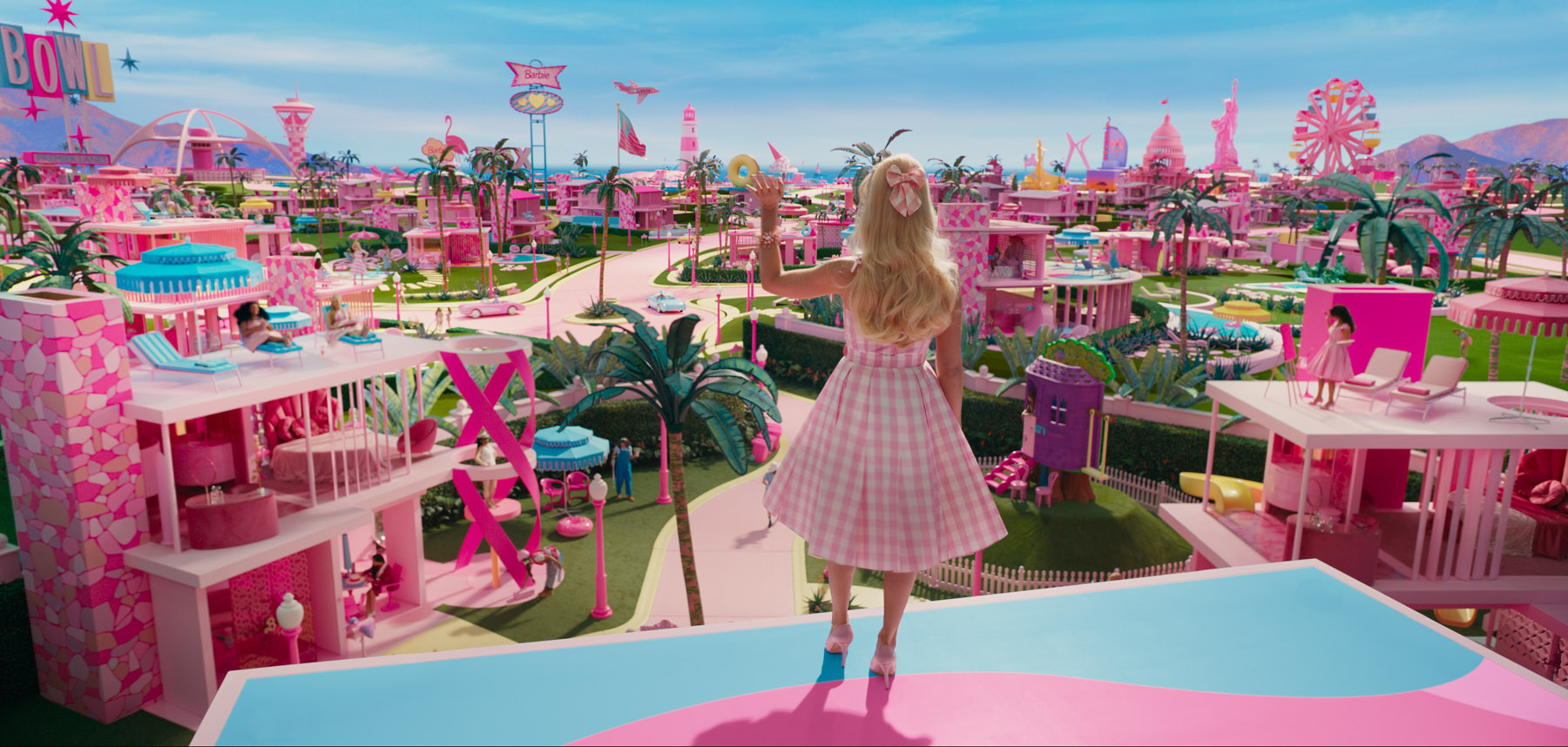
Working Digitally, Thinking Filmically: Yvan Lucas on Barbie’s Unique Look
July 28, 2023 Jul. 28, 2023When Senior Colorist Yvan Lucas got word from frequent collaborator, award-winning cinematographer Rodrigo Prieto, saying that their next project would be about Mattel’s Barbie doll, he was surprised. He knew Prieto, as always, would make his footage look incredible and serve as a perfect complement to the story. But what would that story be? How compelling could a story about a doll be?

But as soon as the colorist learned that Greta Gerwig, director of Ladybird and Little Women, had co-written the script and would be directing, he realized that whatever was in store, the film would be a strong piece of work.
And, of course, Barbie has been very successful both with critics and audiences, breaking multiple box office records and scoring enormous praise. While Margot Robbie and Ryan Gosling’s portrayals of the iconic Barbie and Ken have already garnered enormous acclaim, the film’s look — its entirely unique visual world — has also been called out by most everyone who discusses Barbie. Just one of many examples: The Washington Post called it “A Candy colored confection of knowing humor and bitter irony.”

Much of the movie takes place in a place called Barbieland, which, as Gerwig summed up to Rolling Stone, is “this place with no death, no aging, no decay, no pain, no shame.” This universe, which exists in shades of loud pink with cyan skies and strong reds, was certainly the result of Production Designer Sarah Greenwood (whose department reportedly cornered the market on a particular shade of pink paint) and set and costume designers and, of course, Prieto’s cinematography, which was refined and finetuned in Lucas’s color grading theater.

The first step in deriving this look started before principal photography commenced, when Prieto and Lucas discussed an overall LUT for Gerwig, Prieto and crew to be able to capture a general idea of how everything in front of Prieto’s cameras would eventually read after final grading. The LUT also provided the basis for the dailies, which were also graded by Company 3.

The approach actually derived from philosophical conversations between cinematographer and colorist about the nature of color itself, going back to their first collaboration in 2005 on Oliver Stone’s Alexander, and specifically to work they’d completed on a couple of Martin Scorsese films — The Irishman (2019) and Killers of the Flower Moon (slated for release this fall). Their mutual love of the photochemical film process and the reactions of actual filmstock to light led Lucas to create a special film emulation LUT to bring digitally shot imagery into the visual space of film. Then the DP and colorist created an additional LUT for the previous films, to use in conjunction with the film emulation LUT which was designed to bring an old-school three-strip Technicolor look to imagery.

Part of what made this work unusual in the LUT-making process was the fact that Lucas and Prieto had also conceptualized a proprietary plug-in for the Baselight system. Working with Image Processing and Color Rendering Specialist Philippe Panzani, their color concepts for the “Technicolor” look were engineered into what the group calls the “PPL” plug-in (named for Prieto, Panzani and Lucas) and this tool brought even greater control over colors than the system had otherwise. They made extensive use of this PPL in building the abovementioned LUTs.
Gerwig’s conception of Barbieland involved skin tones that are rather pastel/not very saturated, but where at the same time pinks, turquoises, and other colors really stand out. With this in mind Lucas and Prieto went to work using both the film emulation and the three-strip LUTs in combination with specific refinements for Barbieland to yield what Gerwig dubbed the TechnoBarbie LUT.

“We did quite a lot of work to finetune every shot,” Lucas recalls, “but everybody had a strong concept of where this look would come together from the start because of the LUT.
“I started out as a film timer,” he notes. “Rodrigo and I both love the way different film stocks, each with different characteristics, would affect the look of photography in different eras. Even when we are working on something that was shot digitally, as Barbie was, we both love to do the kind of preparation we did here to design the ‘film stock’ so to speak as a basis for the final look.”
Barbie is currently in theaters throughout the world, where it continues to break records.
